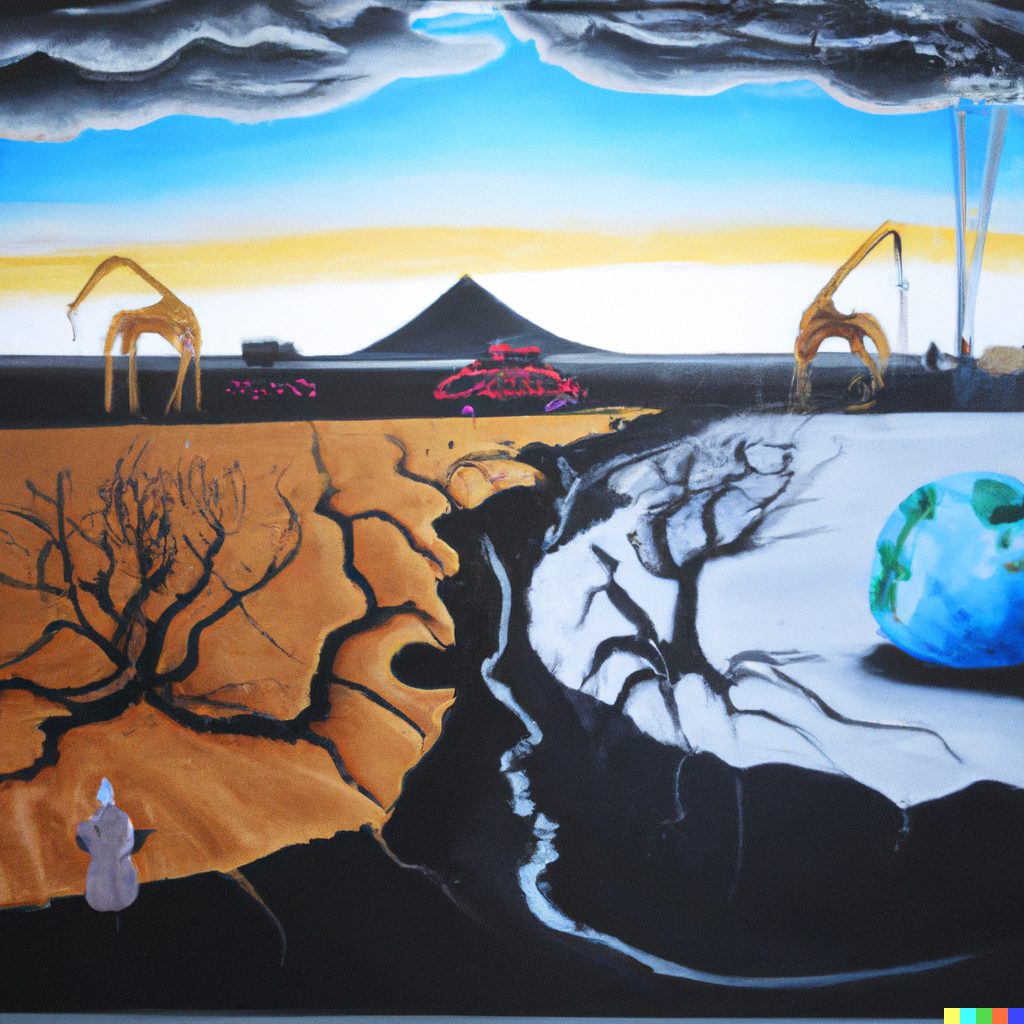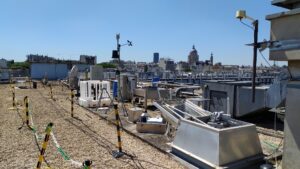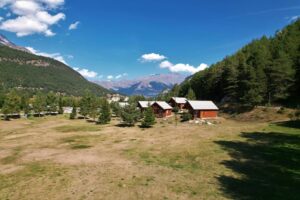The melting of the permafrost by Salvador Dali
Permafrost, the large expanses of permanently frozen ground that partly cover the Arctic, is in danger of disappearing. As a result of climate change and rising temperatures, the permafrost is set to undergo a gradual thaw, which will have serious consequences.

Based on Dall-E artificial intelligence
At present, large quantities of carbon are trapped in permafrost. If the permafrost were to melt, this carbon would be released, increasing greenhouse gas emissions and actively contributing to global warming. Methane could also be released into the atmosphere, amplifying the effects of the carbon.
The future of the various ecosystems and human infrastructures, such as housing, present in this part of the world is also a major issue, linked to the permafrost. Local wildlife, accustomed to this frozen landscape, would be forced to migrate northwards in search of their natural habitat and the food resources they need to survive. But this migration is a temporary solution, and in the long term the permafrost is destined to disappear completely from the Earth’s surface.
Humans could also be strongly affected, both locally, for the populations living in this region of the globe, and on a global scale, with the appearance of new viruses previously imprisoned in the ice.
In this context, Salvador Dali, the famous Spanish painter, could have imagined a painting illustrating the impact of the disappearing permafrost in his characteristic surrealist style. This painting would be a powerful representation of the bizarre and unexpected consequences of climate change. The painting could depict the melting permafrost and its impact on the Arctic ecosystem, as well as the release of greenhouse gases made possible by the melting ice, represented by Dali’s iconic melting clocks and other surreal elements, creating a sense of disorientation and confusion.






